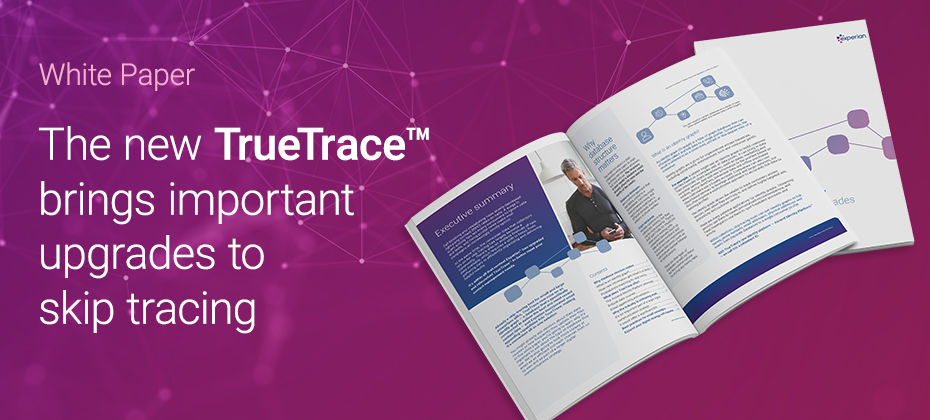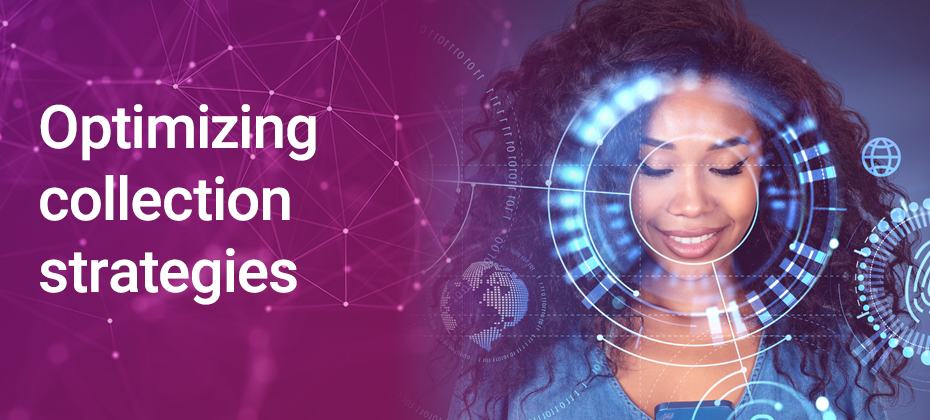
As economic conditions shift and consumer behavior fluctuates, first- and third-party debt collectors must adapt to continually maintain effective debt collection strategies. In this article, we explore collections best practices that can empower collectors to improve operational efficiency, better prioritize accounts and enhance customer interactions, all while ensuring compliance with changing regulations.
Best practices for improving your collection efforts
1. Implement a data-driven collection strategy
Many collectors are already using artificial intelligence (AI) and machine learning (ML) to gain a more complete view of their consumers, segment accounts and create data-driven prioritization strategies. The data-backed approach is clearly a trend that’s going to stick. But access to better (i.e., more robust and hygienic) data and debt collection analytics will distinguish the top performers.
You can use traditional credit data, alternative credit data, third-party data and advanced analytics to more precisely segment consumers based on their behavior and financial situation — and to determine their propensity to pay. Supplementary data sources can also help with verifying consumers’ current contact information and improving your right-party contact rates.
Cloud-based platforms and access to various data sources give debt collectors real-time insights. Quickly identifying consumers who may be stretched thin or trending in the wrong direction allows you to proactively reach out with an appropriate pre-collection plan.
And for consumers who are already delinquent, the more precise segmentation and tracking can help you determine the best contact channels, times and personalized treatments. For instance, you could optimize outreach based on specific account details (rather than general time-based metrics) and offer payment plans that the customer can likely afford.
2. Use technology to maximize your resources
Data-driven prioritization strategies can help you determine who to contact, how to contact them and the treatment options you offer. But you may need to invest in technology to efficiently execute these findings. Although budgets may be limited, the investment in debt recovery tools can be important for handling rising account volumes without increasing headcount. Some opportunities include:
- Automate processes and outreach: Look for opportunities to automate tasks, particularly monotonous tasks, to reduce errors and free up your agents’ time to focus on more valuable work. You could also use automated messages, texts, chatbots and virtual negotiators with consumers who will likely respond well to these types of outreaches.
- Establish self-service platforms:Create self-service platforms that give consumers the ability to choose how and when to make a payment. This can be especially effective when you can accurately segment consumers based on the likelihood that they’ll self-cure and then automate your outreach to that segment.
- Keep consumer data up to date: Have systems in place that will automatically verify and update consumers’ contact information, preferences and previous collection attempts.
- Reprioritize old accounts based on significant changes: Tools like Experian’s Collection Triggers℠ allow you to monitor accounts and automatically get alerted when consumers experience a significant change, such as a new job, that could prompt you to put their account back into your queue.
3. Prioritize customer experience
In some ways, debt collectors today often work like marketers by embracing digital debt collection and a customer-first philosophy to improve the consumers’ experiences. Your investment in technology goes together with this approach. You’ll be able to better predict and track consumers’ preferences and offer self-cure options for people who don’t want to speak directly with an agent.
You also may need to review your regular onboarding and training programs. Teaching your call center agents to use empathy-based communication techniques and work as a partner with consumers to find a viable payment plan can take time. But the approach can help you build trust and improve customer lifetime value.
4. Continue to carefully monitor regulatory requirements
Keeping up with regulatory requirements is a perennial necessity for collectors, and you’ll need to consider how to stay compliant while adding new communications channels and storing consumer data. For example, make sure there are “clear and conspicuous” opt-out notices in your electronic communications and that your systems can track which channels consumers opt out of and their electronic addresses.1
In some cases, the customer-first approach may help minimize regulatory risks, as you’ll be training agents to listen to consumers and act in their interest. Similarly, data-driven optimizations can help you increase collections with fewer contacts.
WATCH: Explore credit union collection trends and successful account management strategies.
Partner with a top provider to achieve success
Experian has partnered with many debt collectors to help them overcome challenges and increase recovery rates. There are multiple solutions available that you can use to improve your workflow:
- TrueTrace™ and TrueTrace Live™: Leverage access to the consumer credit database that has information on over 245 million consumers, and additional alternative databases, to maintain current addresses and phone numbers.
- PriorityScore for Collections ℠ Know which accounts you should focus on with over 60 industry-specific debt recovery scores. You can choose to prioritize based on likelihood to pay or expected recovery amount.
- Collection Triggers℠: Daily customer monitoring can tell you when it’s time to approach a consumer based on life events, such as new employment or recent credit inquiries.
- Phone Number ID™ with Contact Monitor™: Increase right-party contact rates and avoid Telephone Consumer Protection Act (TCPA) violations with real-time phone ownership and type monitoring from over 5,000 local exchange carriers.
Experian’s PowerCurve® Collections and Experian® Optimize solutions also make AI-driven automated systems accessible to debt collectors that previously couldn’t afford such advanced capabilities. Building on Experian’s access to many sources of credit and non-credit data, these solutions can help you design debt collection strategies, predict consumer behavior and automate decisioning.
Learn more about Experian’s debt collection solutions.
This article includes content created by an AI language model and is intended to provide general information.


